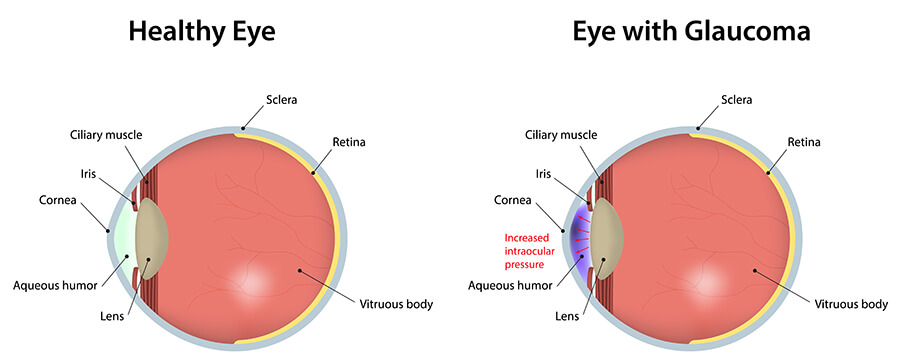Recognizing the Different Vision Modification Procedures Available for Clearer View
In the world of vision improvement treatments, a wide range of alternatives exist to resolve refractive mistakes and supply people with more clear sight. Let's check out the complexities of these procedures and lost light on the path to accomplishing improved vision clarity.
LASIK Surgery
LASIK surgical treatment is a common refractive procedure made use of to fix vision issues such as nearsightedness, astigmatism, and farsightedness. This medical technique, which stands for Laser-Assisted in Situ Keratomileusis, intends to improve the cornea to enhance just how light is focused on the retina, ultimately improving vision quality.
One of the main advantages of LASIK surgical procedure is the quick improvement in vision experienced by people. On the whole, LASIK surgical procedure is a prominent choice for people seeking a long-lasting option for their vision problems.
PRK Treatment
While additionally a common refractive treatment, the PRK (Photorefractive Keratectomy) method varies from LASIK surgery in its technique to correcting vision issues. In PRK, rather than developing a flap on the cornea, the outer layer of the cornea, called the epithelium, is completely removed. This permits the laser to reshape the cornea to fix refractive mistakes such as farsightedness, nearsightedness, and astigmatism straight on the surface.

Despite the longer healing time, PRK can yield superb cause vision enhancement, making it an important alternative for those that might not appropriate candidates for LASIK surgical procedure.
Implantable Lenses
In comparison to PRK where the cornea is reshaped directly, implantable lenses offer another technique for remedying vision by placing man-made lenses inside the eye. This procedure is particularly beneficial for individuals with high degrees of astigmatism, farsightedness, or nearsightedness that may not appropriate candidates for laser surgeries like LASIK or PRK.
Implantable lenses, additionally called phakic intraocular lenses, work by supplementing the eye's all-natural lens with a fabricated one. refractive surgeries in al. These lenses can be placed before the all-natural lens (anterior chamber) or behind the iris and before the all-natural lens (posterior chamber) By readjusting the power and positioning of these lenses, ophthalmologists can efficiently correct refractive mistakes and boost aesthetic acuity
One benefit of implantable lenses is that they are exchangeable and removable, providing flexibility for future modifications. As with any type of surgical treatment, there are risks included, such as infection or cataract development. Patients considering implantable lenses must seek advice from with an eye care expert to identify the most suitable alternative based on their specific needs and eye wellness.
Corneal Rings
Corneal rings, likewise called intracorneal ring sections, are small, transparent devices placed right into the cornea to remedy vision distortions such as keratoconus. Keratoconus is a condition where the cornea thins and bulges exterior, causing vision to end up being altered. The insertion of corneal rings aids to flatten the cornea, enhancing aesthetic acuity and decreasing the irregular astigmatism brought on by keratoconus.
The treatment for putting corneal rings is minimally invasive and fairly quick, usually carried out as an outpatient treatment. Throughout the surgery, the eye doctor makes a tiny cut in the cornea and inserts the rings at a details deepness. Once in place, the rings aid to reshape the cornea, giving a smoother surface for light to enter the eye, which can result in clearer vision.
Corneal rings are taken into consideration a reversible procedure, as they can be gotten rid of or changed if necessary. eyecare near me. While they may not completely eliminate the need for glasses or get in touch with lenses, corneal rings can substantially improve vision quality and general visual convenience for individuals with keratoconus or other corneal irregularities
Refractive Lens Exchange
Complying with the improvement of corneal abnormalities with treatments like corneal rings, an additional vision adjustment strategy that can resolve refractive mistakes is Refractive Lens Exchange (RLE) RLE is a procedure that includes replacing the eye's natural lens with a synthetic intraocular lens (IOL) to correct refractive mistakes such as farsightedness, presbyopia, and nearsightedness. This procedure is particularly helpful for people that may not be suitable prospects for treatments like LASIK or PRK due to factors such as slim corneas or high refractive errors.

Final Thought
In verdict, there are different vision correction procedures available to help people achieve clearer view. LASIK surgical procedure, PRK procedure, implantable lenses, corneal rings, and refractive lens exchange are all choices that can attend to different vision issues.
In the world of vision adjustment procedures, a multitude of alternatives exist to resolve refractive errors and give people with clearer view.LASIK surgical treatment is a common refractive treatment utilized to fix vision problems such as farsightedness, astigmatism, and nearsightedness.While additionally a typical refractive procedure, the PRK (Photorefractive Keratectomy) strategy differs from LASIK surgery in its approach to dealing with vision issues.Following the modification of corneal abnormalities with procedures like corneal rings, an additional vision adjustment strategy that can address refractive errors is Refractive Lens go to my blog Exchange (RLE) LASIK surgical procedure, PRK procedure, implantable lenses, corneal rings, and refractive lens exchange are all alternatives that can deal with various vision concerns.